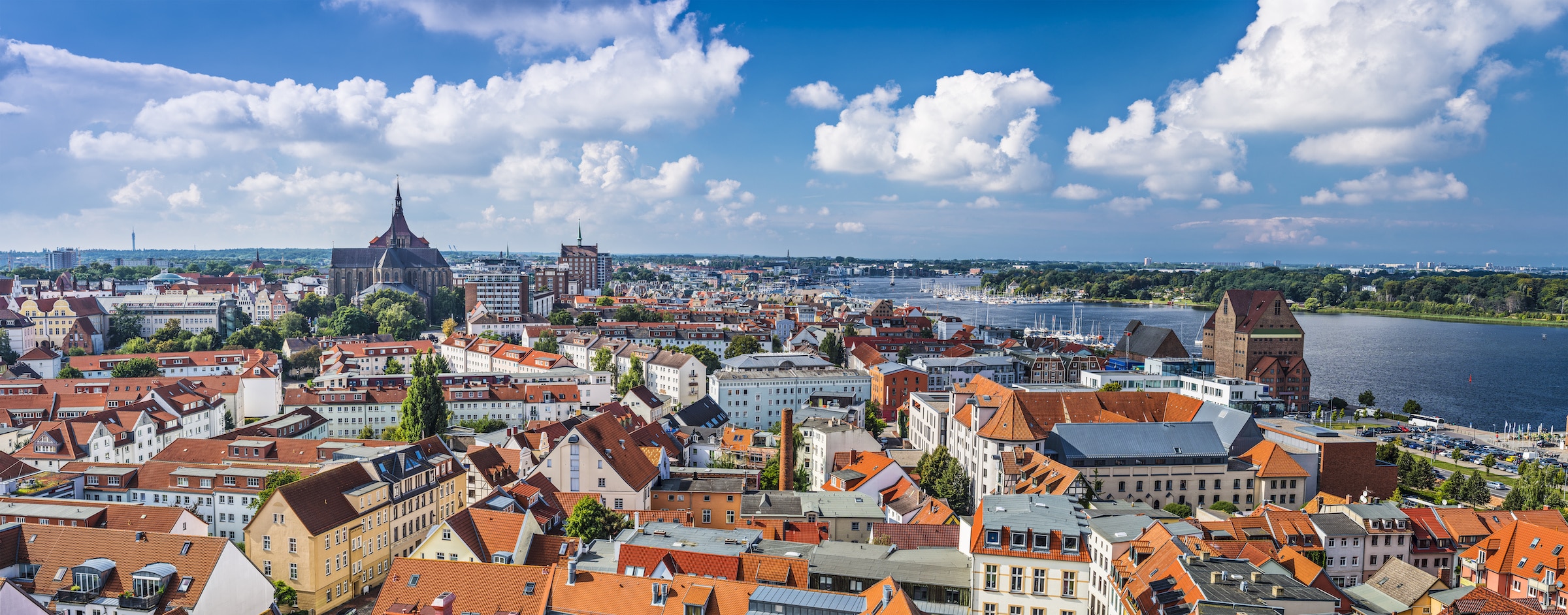Rostock

The largest city in Mecklenburg-Vorpommern is lively and full of contrasts: large street axes, modern buildings, narrow alleys, Gothic brick buildings, patrician houses such as the Kerkhoffhaus, a city harbor and, above all, the breath of the distant world that begins at the harbor in Warnemünde, 14 kilometers away.
To this day, the cityscape is marked by the time of the Hanseatic League. As part of this powerful trade association, the people of Rostock primarily traded with Scania, then located in southern Sweden, and Denmark. Hanseatic brick Gothic and the university still bear witness to the splendor of the bygone era: the university is the oldest in northern Europe and was founded as an educational center of the Hanseatic League. Behind the town hall are several gabled houses in the Gothic style that are worth seeing. The National Socialists used the port and the shipyards for military purposes. Thus, Rostock became an important location for the armaments industry and thus a preferred target for Allied bombing raids, which destroyed half the city.
After the fall of the Wall, many citizens migrated to other cities. Today, the city lives from the port and tourism: 400,000 cruise ship tourists and 2.2 million ferry passengers come to the city every year.